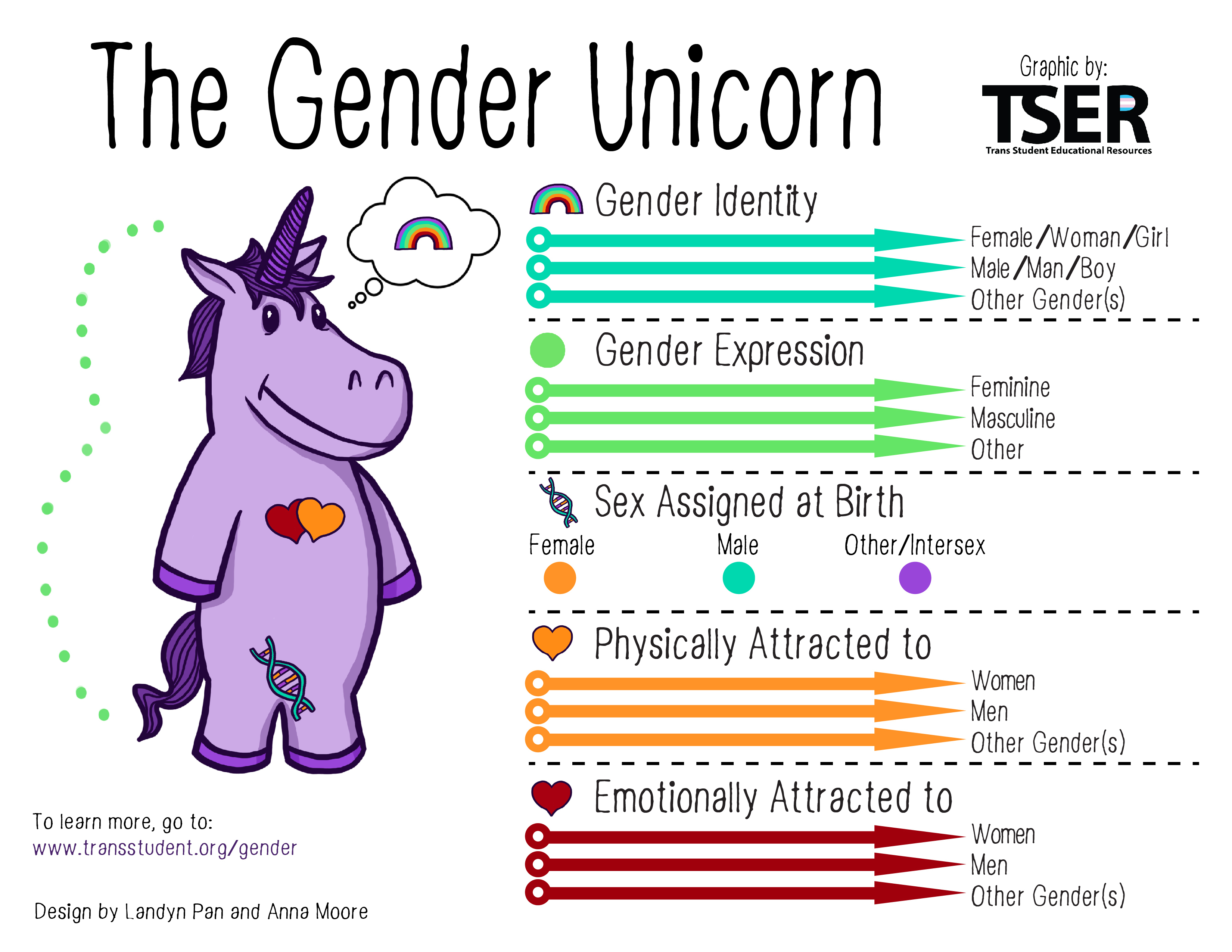🛠 Activity
Gender Unicorn
The words we use for talking about sex, sexuality, and gender are constantly changing. This activity uses the image of the Gender Unicorn, to explore differences between gender identity, gender expression, sex assigned at birth, physical attraction and emotional attraction.
What you need
- Gender Unicorn image (1 per participant)
- Whiteboard / Butchers paper
- Markers
How to facilitate:
- Explain to participants
📢 SAY
"We are going to explore an activity about sex, sexuality, and gender. Gender is something that we all know something about and have some experience of. However, it is more complicated than it may first seem."
2. Refer to the Gender Unicorn image.

3. Look at Gender Unicorn image
4. Break into pairs to discuss / by themselves
5. DEFINE
Start with headings, without definitions:
🗣️ BRAINSTORM
Brainstorm with participants on what each of these terms may mean. Remember that there may be a diversity of views and perspectives present.
GENDER
- Gender identity
- Gender expression
SEX
- Sex assigned at birth
SEXUALITY
- Physically attracted to
- Emotionally attracted to
Some prompts:
- What are some things that only women can do? What about anything that only men can do?
- Are there words / terms that are ‘negative’ or derogatory? Why?
- Concluding: There is nothing that only women or only men can do…There are things that only people with particular anatomy can do, but that is about sex, not gender.
⚠️ Takeaways
Overall, there is notable generational support among younger people toward sex, sexuality, and gender diversity, especially when contrasted with older people. Facilitate shared peer knowledge between participants, affirming sex, sexuality, and gender diversity overall. Learn from young participants themselves on how they understand or give language to this complexity.
Reinforce that:
- Sex, Gender, and Sexuality are different things
- What you wear does not equal how you identify.
- Use positive, kind, and respectful language.
- Each person deserves love and respect, no matter who you are.
- We don’t need to understand someone to support them.
We don’t always have to understand someone in order to support them to be who they are. Love and compassion should not be based on how clearly someone can prove or explain their own identity or experiences.
📗 Working definitions
Use the following definitions to talk through what each of the headings may mean for individuals in the room:
- Gender identity
This refers to your internal sense of gender and how you identify, based on the options that you think you have available to you. Some people don’t feel as though they have a gender identity.
- Gender expression
This is how you present your gender to the world. Gender expression can refer to social cues that people use to express their gender identity, including how someone dresses, their hairstyle, etc. Gender expressions are usually described as ‘masculine’ or ‘feminine’ or ‘gender-neutral’.
- Sex assigned at birth
Most people are assigned a sex at birth. This means that a nurse, doctor or midwife would have looked at your genitals, and then given you a label based on what they saw. But your physical sex isn’t actually that simple. Sex can be determined by a combination of chromosomes (for example XX or XY), hormone levels, genes, and physical characteristics like genitals.
- Physically attracted to
This refers to who you tend to be physically attracted to.
- Emotionally attracted to
This refers to who you tend to be emotionally attracted to. This may or may not overlap with sexual desire.
This activity was adapted from the activity ‘Genderbread Person’, from: Hoyle, A. & McGeeney, E. (2020). Great Relationships and Sex Education: 200+ Activities for Educators Working with Young People. Routledge, p118